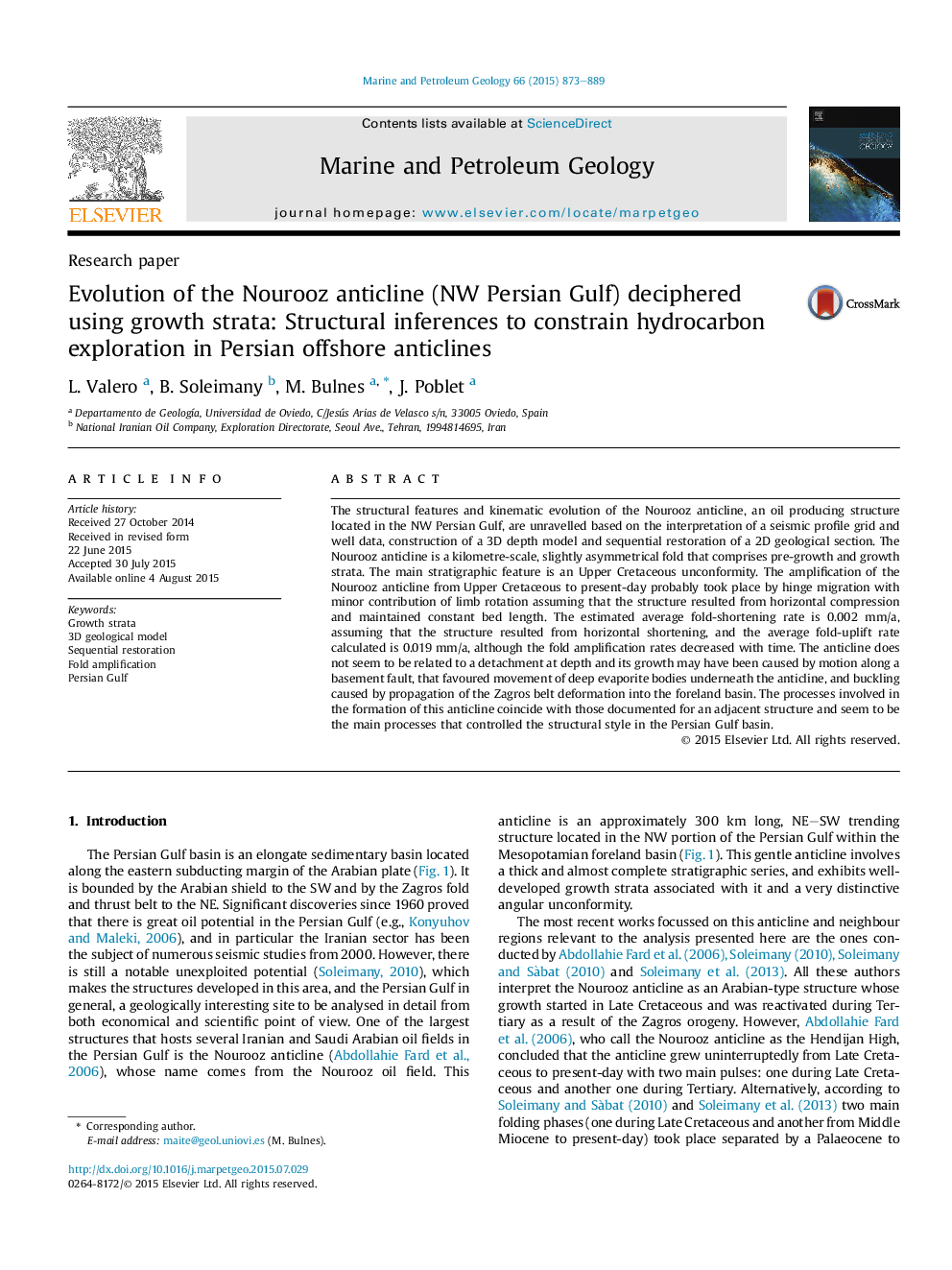| Article ID | Journal | Published Year | Pages | File Type |
|---|---|---|---|---|
| 4695496 | Marine and Petroleum Geology | 2015 | 17 Pages |
•The Nourooz anticline history has been unravelled using growth strata.•Two periods of fast fold amplification separated by two periods of slow growth occurred.•Fold amplification involved hinge migration with minor contribution of limb rotation.•The Nourooz anticline growth involved basement faulting, evaporite motion and buckling.•The Nourooz anticline history is similar to other structures in the Persian Gulf.
The structural features and kinematic evolution of the Nourooz anticline, an oil producing structure located in the NW Persian Gulf, are unravelled based on the interpretation of a seismic profile grid and well data, construction of a 3D depth model and sequential restoration of a 2D geological section. The Nourooz anticline is a kilometre-scale, slightly asymmetrical fold that comprises pre-growth and growth strata. The main stratigraphic feature is an Upper Cretaceous unconformity. The amplification of the Nourooz anticline from Upper Cretaceous to present-day probably took place by hinge migration with minor contribution of limb rotation assuming that the structure resulted from horizontal compression and maintained constant bed length. The estimated average fold-shortening rate is 0.002 mm/a, assuming that the structure resulted from horizontal shortening, and the average fold-uplift rate calculated is 0.019 mm/a, although the fold amplification rates decreased with time. The anticline does not seem to be related to a detachment at depth and its growth may have been caused by motion along a basement fault, that favoured movement of deep evaporite bodies underneath the anticline, and buckling caused by propagation of the Zagros belt deformation into the foreland basin. The processes involved in the formation of this anticline coincide with those documented for an adjacent structure and seem to be the main processes that controlled the structural style in the Persian Gulf basin.
